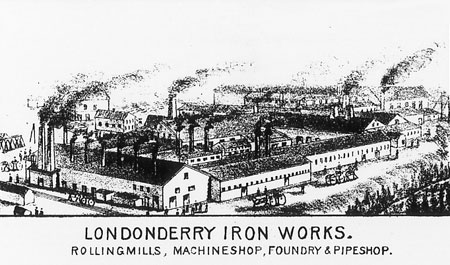We love getting questions about #mining, #minerals and #geology! We were asked about the historical #Torbrook iron mines in #AnnapolisCounty. Here’s our answer:
#nspoli #NovaScotia #NS
@GlavineLeo @KeithIrvingNS
@JohnLohrMLA @mmillershubie @scottbrison @AVRCE_NS @StephenMcNeil
#nspoli #NovaScotia #NS
@GlavineLeo @KeithIrvingNS
@JohnLohrMLA @mmillershubie @scottbrison @AVRCE_NS @StephenMcNeil

#NovaScotia’s first #iron mines were developed in 1825 at #NictauxFalls, #AnnapolisCounty.
#nspoli @GlavineLeo @KeithIrvingNS
@JohnLohrMLA @mmillershubie @scottbrison @AVRCE_NS @StephenMcNeil
#nspoli @GlavineLeo @KeithIrvingNS
@JohnLohrMLA @mmillershubie @scottbrison @AVRCE_NS @StephenMcNeil

Also in 1825, the #Annapolis Iron Mining Co. built a blast furnace at #MooseRiver (#Clementsport) to smelt the magnetic ore recovered from three seams in #Clementsvale (the Miller, Potter and Milbury), as well as to accommodate production from the #Nictaux deposits.
#nspoli #NS
#nspoli #NS

By the 1890s additional #iron reserves had been discovered at #Torbrook, near #Nictaux, leading to a sporadic succession of mining and smelting initiatives. Torbrook’s Wheelock and Leckie mines produced 349,000 tons of iron ore between 1891-1913.
#nspoli #NovaScotia #NS
#nspoli #NovaScotia #NS

Unfortunately, #Torbrook #iron was relatively low quality. It contained a lot of phosphorous and sulphur which are impurities in steel-making.
#nspoli #Novascotia #NS
#nspoli #Novascotia #NS

Steel is mainly #iron and carbon, and the carbon is derived from #coal. #NovaScotia got into steel production because it has vast coal deposits and the hope was that local iron would provide the second of the two key ingredients.
#nspolic #NS
#nspolic #NS

The biggest iron producer in #NovaScotia – and in #Canada, for a while - was the Acadian Iron Mines at #Londonderry, #ColchesterCounty. #Mining began there in 1849 and continued until 1908. It became a major industrial centre with iron mining, smelting and steel-making.
#nspoli
#nspoli

#Londonderry had ~5000 residents at its peak and was the main economic driver in Northern #NovaScotia. It produced high quality iron and had a very good reputation. ie, its iron was used by steel mills in Sheffield, England, which produced some of the best steel globally.
#nspoli
#nspoli

As #Londonderry’s #iron deposits were gradually depleted, iron ore from the #Nictaux-#Torbrook area was mixed with ore from Londonderry to stretch the Londonderry supply.
#nspoli #novascotia #ns

#nspoli #novascotia #ns


Unfortunately, the blending didn’t work – #Nictaux-#Torbrook’s phosphorous and sulphur lowered the quality of the #Londonderry ore and contributed to the eventual shutdown of Londonderry.
#nspoli #NS #novascotia

#nspoli #NS #novascotia


Two major fires in #Londonderry – in 1900 and 1920 – helped bring its #iron #mining days to an end. Also, the discovery of major iron deposits in Wabana, #Newfoundland, in 1892 and #Ontario in 1877 made #NovaScotia’s relatively small deposits uneconomical.
#nspoli #NS
#nspoli #NS
• • •
Missing some Tweet in this thread? You can try to
force a refresh



























